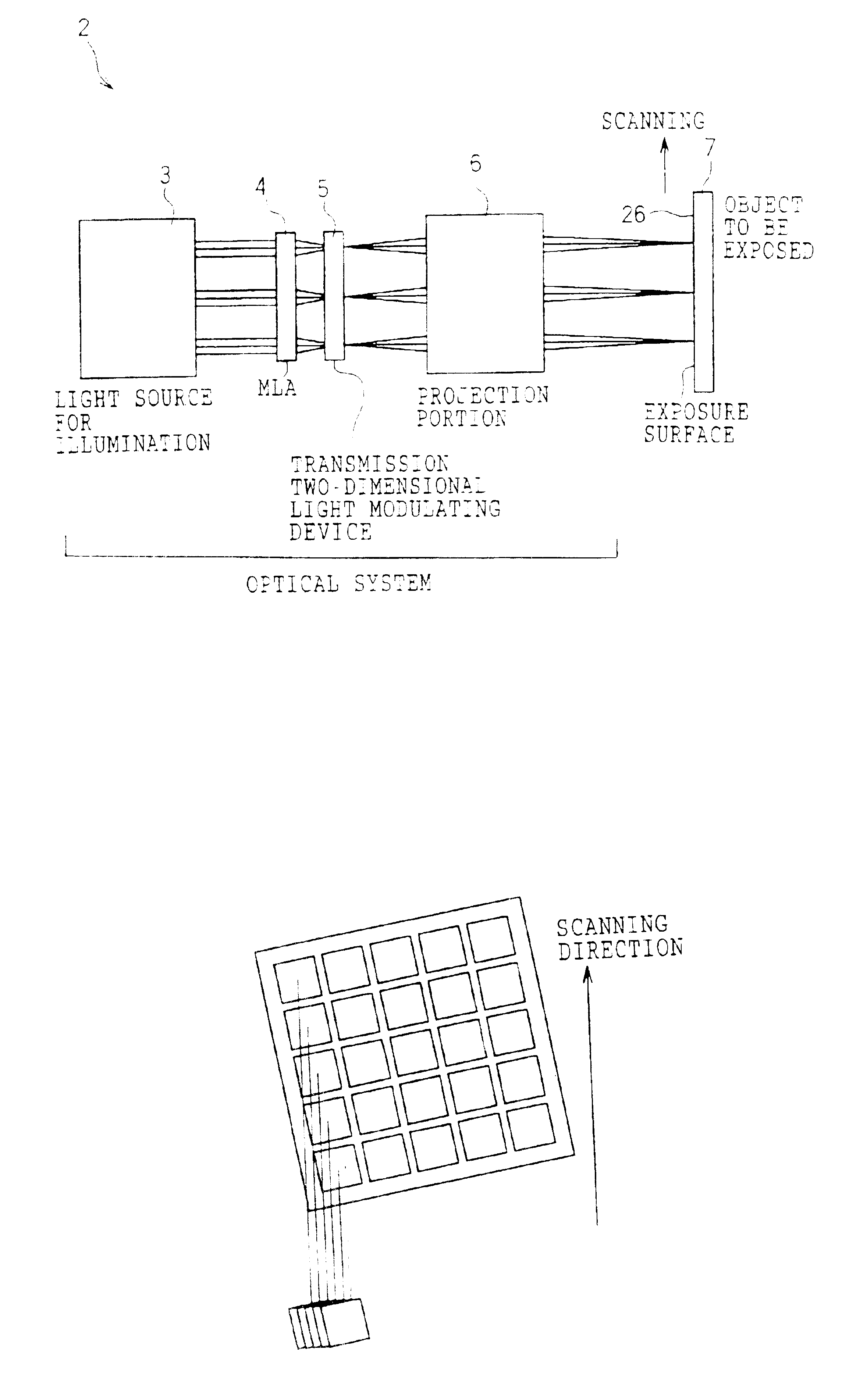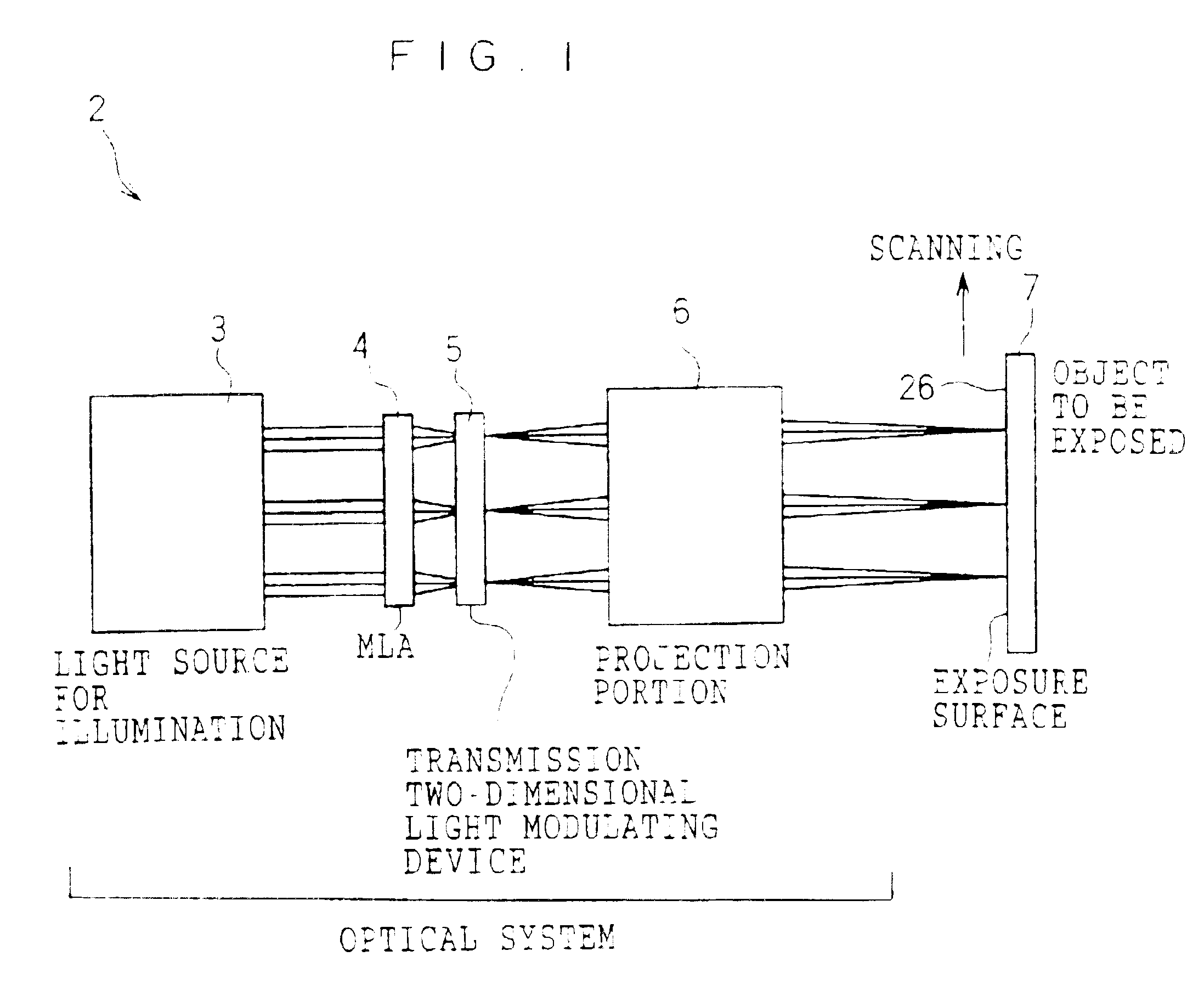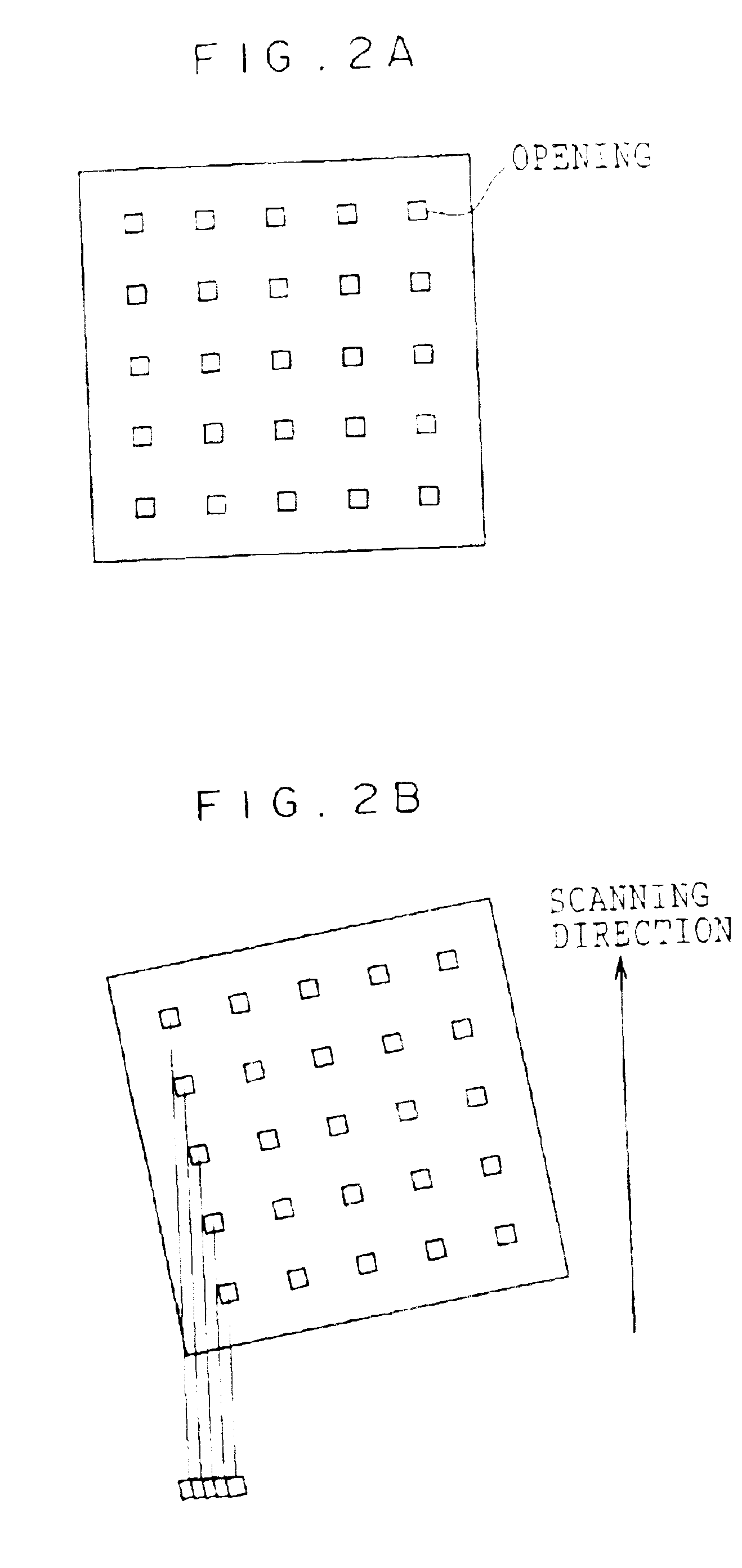Light modulating device and exposure apparatus using the same
a light modulating device and light modulating technology, applied in the direction of shades, point-like light sources, lenses, etc., can solve the problems of limiting a kind of light source, generating disadvantages in high-speed response, and not getting practical useful resolution, so as to improve the usability of light and improve the resolution
- Summary
- Abstract
- Description
- Claims
- Application Information
AI Technical Summary
Benefits of technology
Problems solved by technology
Method used
Image
Examples
first embodiment
[First Embodiment]
[0046]Initially a first embodiment will be described. FIG. 1 shows the whole of exposure apparatus of the first embodiment. In an exposure apparatus 2 of the first embodiment, a plane-shaped light beam emitted from a light source for illumination 3 is incident to a microlens array (hereinafter referred to as MLA) 4, and a transmission two-dimensional light modulating device 5 is irradiated with the light beam condensed with MLA 4. Each microlens in MLA corresponds to each light modulating element in the two-dimensional light modulating device 5, and the microlens is designed and adjusted so that an optical axis and a focal point of the microlens are in alignment with the center of the light modulating element of the light modulating element. The microlens array 4 corresponds to the lens array described in the mode of the invention. A light modulating element is provided corresponding to a pixel of an image to be recorded.
[0047]The incident light from the light sour...
second embodiment
[Second Embodiment]
[0057]A second embodiment will be described below. In the second embodiment, the same components as those of the first embodiment are indicated by the same reference numerals and the description is omitted. As shown in FIG. 3, an exposure apparatus 10 described in the second embodiment includes a light modulating portion 23 in which MLA and the light modulating element are integrated.
[0058]Therefore, it is not necessary to adjust the positioning of MLA and the two-dimensional light modulating device, and cost reduction can be achieved because tolerances of the optical accuracy of MLA and the dimensional accuracy of the pattern of the two-dimensional light modulating device are increased. Since the relative positional accuracy between MLA and the two-dimensional light modulating device is improved, the incident light can be efficiently condensed into the light modulating element and the usability of the light can be also improved. Further, since the relative positi...
third embodiment
[Third Embodiment]
[0085]A third embodiment will be described below. FIG. 15 is a block diagram showing the whole exposure apparatus of a third embodiment, FIG. 16 is a sectional view of a transmission two-dimensional light modulating device built in the exposure apparatus of the third embodiment, FIG. 17 is a partially expanded sectional side view of the transmission two-dimensional light modulating device shown in FIG. 16, and FIG. 18 is a partially expanded plan view of FIG. 17. In the third embodiment, the same components as those of the second embodiment are indicated by the same reference numerals and the description is omitted.
[0086]As shown in FIG. 15, a transmission two-dimensional light modulating device 201 is built in an exposure apparatus 200 described in the third embodiment. The transmission two-dimensional light modulating device 201 includes the two-dimensional light modulating device 203 in which micro electro-mechanical light modulating elements are two-dimensional...
PUM
| Property | Measurement | Unit |
|---|---|---|
| diameter | aaaaa | aaaaa |
| refractive index | aaaaa | aaaaa |
| transmittance | aaaaa | aaaaa |
Abstract
Description
Claims
Application Information
 Login to View More
Login to View More - R&D
- Intellectual Property
- Life Sciences
- Materials
- Tech Scout
- Unparalleled Data Quality
- Higher Quality Content
- 60% Fewer Hallucinations
Browse by: Latest US Patents, China's latest patents, Technical Efficacy Thesaurus, Application Domain, Technology Topic, Popular Technical Reports.
© 2025 PatSnap. All rights reserved.Legal|Privacy policy|Modern Slavery Act Transparency Statement|Sitemap|About US| Contact US: help@patsnap.com



